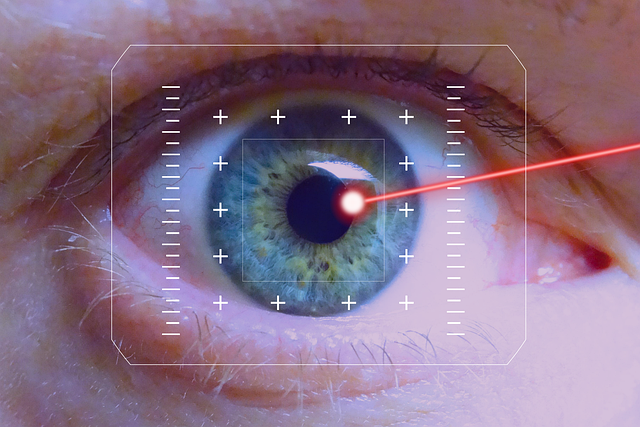In the evolving world of visual entertainment, the term dynamic range has become a cornerstone for both manufacturers and consumers. It represents the span between the darkest shadows and brightest highlights a display can render with detail and fidelity. As technology pushes boundaries, understanding dynamic range becomes essential to appreciate why the newest televisions and monitors feel more cinematic and why the same content looks different across devices.
What Is Dynamic Range, Exactly?
Dynamic range is measured in stops or decibels, indicating how much contrast a panel can handle. In simple terms, a higher dynamic range means a screen can produce deeper blacks and brighter whites without losing detail. For everyday life, this translates to richer colors, more depth, and the ability to see subtle textures in a night scene or a dazzling fireworks display.
- Shadows retain detail instead of turning flat.
- Highlights stay bright but not washed out.
- Midtones maintain clarity across the spectrum.
The Science Behind the Numbers
Dynamic range is often expressed as a ratio: a 12‑stop panel can produce about 2,000:1 contrast, while a 14‑stop panel reaches roughly 16,000:1. These ratios come from the logarithmic nature of human vision; we perceive differences better when they are evenly spaced across the spectrum. OLED panels, for instance, can achieve near infinite contrast because each pixel emits its own light, allowing absolute blacks.
“Dynamic range is the difference between what your eye can see and what the device can deliver.”
How Dynamic Range Impacts Everyday Viewing
Consider a blockbuster movie shot with high‑dynamic‑range (HDR) cameras. When streamed to a low‑dynamic‑range screen, the bright sky may become a featureless white, and the night‑time interior may look muddy. On a display with ample dynamic range, those same scenes will preserve fine detail, creating a more immersive experience. This is especially noticeable in gaming, where lighting cues can affect gameplay and storytelling.
HDR Standards and the Role of Dynamic Range
Two major HDR formats dominate the market: HDR10 and Dolby Vision. HDR10 requires a minimum of 10‑bit color depth and 1,000 nits peak brightness, while Dolby Vision can reach 12 bits and up to 10,000 nits, demanding displays with a wider dynamic range to fully utilize its capabilities.
- HDR10: 10-bit, 1,000 nits, static metadata.
- Dolby Vision: 12-bit, up to 10,000 nits, dynamic metadata.
Display Technologies That Push Dynamic Range
Several panel technologies contribute to higher dynamic ranges:
- OLED: Each pixel emits light, enabling perfect blacks and high contrast ratios.
- Mini‑LED: Uses thousands of local dimming zones to reduce blooming and raise peak brightness.
- Micro‑LED: Combines OLED’s contrast with LED brightness, delivering exceptional dynamic range.
- Quantum‑dot LCD: Enhances color gamut and brightness, improving perceived dynamic range.
While each technology has trade‑offs, the trend is clear: manufacturers aim for panels that can handle the extreme light levels required by next‑generation HDR content.
Why Color Depth Matters With Dynamic Range
Color depth defines how many shades of each color can be displayed. A 10‑bit panel can show 1.07 billion colors, whereas 12 bits allows 16.7 billion. The more colors you can render, the smoother the gradients, especially in high‑contrast scenes. Without sufficient color depth, a display with high dynamic range may still produce banding or color clamping, reducing the overall quality.
Measuring Dynamic Range in Practice
Professional measurement tools use calibrated light sources and photometers to capture a display’s response curve. They plot brightness levels against input values to produce a graph known as a “gamma curve.” A steep curve indicates a high dynamic range; a shallow curve shows a flatter, less capable screen. For consumers, simplified metrics like “peak brightness” and “black depth” are often quoted, but they don’t capture the full picture.
Dynamic Range vs. Picture Quality
High dynamic range is a necessary condition for cinematic quality, but it is not sufficient. Factors such as HDR mastering, motion interpolation, and processing algorithms also influence the final image. For example, a 50‑inch 4K TV with 14‑stop dynamic range can still look flat if its internal processing reduces contrast to improve perceived color accuracy.
Future Trends: Beyond Current Dynamic Ranges
Industry analysts predict that 8K resolution and 12‑bit HDR will become mainstream within the next decade. Emerging display technologies like holographic and retinal‑display prototypes aim to surpass the limitations of conventional panels, potentially offering dynamic ranges measured in millions of stops. While such advancements remain research‑phase, they point toward an era where visual fidelity may match or even exceed the human eye’s natural dynamic range.
In summary, dynamic range is the backbone of modern visual storytelling. It dictates how faithfully a screen can reproduce the extremes of light and color that filmmakers, game designers, and content creators craft. As technology advances, watching a film in a room that mimics the depth of a real cinema will become the default, not the exception. For anyone choosing a new TV or monitor, paying close attention to dynamic range alongside resolution, color accuracy, and refresh rate will ensure that future content delivers the experience it was intended to provide.




